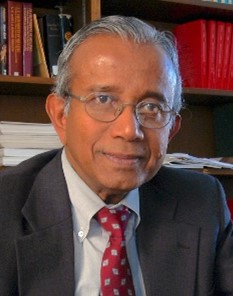
Patrick Olivelle est professeur émérite à l’université d’Austin, où il a enseigné la philologie et la littérature sanskrite. Récipiendaire de nombreux prix, dont celui de la Fondation Colette Caillat de l’Institut de France, il est l’auteur de plus d’une trentaine d’ouvrages, dont de nombreuses éditions et traductions anglaises des plus grands textes sanskrits.
Ulysse Barthel, doctorant à l’EFEO/EPHE, s’est entretenu avec lui à l’occasion de la parution en librairie de la traduction française de son dernier livre, Ashoka, roi philosophe.
Ulysse Barthel. – What motivated you to write this book?
Patrick Olivelle. – My original motivation to study Ashokan inscriptions stemmed from my work on the history of the term « dharma ». I found it significant that Ashoka uses the term more than 100 times in his brief inscriptions totaling only about 4,500 words. I tried to demonstrate that Ashoka played a key role in making dharma a key religious/cultural concept in ancient India. The proximate reason for undertaking to write a biography of the king was an invitation from Dr. Ramachandra Guha to write it for inclusion in his 40-volume series Indian Lives. I came also to appreciate and admire the « man ». Ashoka’s ecumenical outlook and his desire to create a new political and moral philosophy based on dharma, makes him a unique figure in ancient history. Indeed, his outlook is quite refreshing and modern.
U. B. – Did you encounter any difficulties when using or interpreting historical sources?
P. O. – The main difficulty in writing a biography of Ashoka is the lack of historical sources. Most sources are Buddhist and were composed several centuries after Ashoka, and they are guided by a uniquely Buddhist view of Ashoka and his centrality in Buddhist history. I have depended more or less exclusively on Ashoka’s own words written on stone inscriptions. These have the added advantage of revealing Ashoka’s thinking and being in exactly the same form in which they were written. The disadvantage is that we let Ashoka define who he is. We do not have testimony of his contemporaries about what he did and how his messages were received. I have tried to compensate for this by close readings of the texts and interrogating them: trying to read between the lines, investigating silences, and the like.
U. B. – What do you think is the link between Ashoka and the emergence of writing in India?
P. O. – Ashoka’s inscriptions are the earliest extant writings from ancient India. Some letters on pottery shards have been discovered, but their dating is not quite certain. The issue is whether writing existed before Ashoka, or whether he invented the alphabet which he used. Arguments have been presented for both sides, but no consensus has been reached. I myself believe that writing preceded Ashoka, but that public writing, especially stone inscriptions were Ashokan innovations.
U. B. – How would you characterize dynastic sentiment during Ashoka’s reign?
P. O. – I am not sure about the meaning of « dynastic sentiment, » but it is clear that royal succession was hereditary, even though there were controversies about who the legitimate heir should be. When a king has sons from many wives, as was the case in ancient India, the line of succession becomes muddied and complicated. Ashoka himself never mentions his father or grandfather, the reason for which remains a mystery. He does mention frequently his sons and grandsons, whom he assumed would succeed him.
U. B. – What, in your opinion, is the legacy of Ashoka’s political message in contemporary India? Is his figure today the object of a form of instrumentalization?
P. O. – In the Epilogue to my book, I look at the reception of Ashoka and his message down the centuries—in Buddhism, in Indian history, and in the countries of Asia under Indian influence, notably Sri Lanka. I make a special effort to look at his reception in modern India within the context of its struggle against colonial rule. Jawaharlal Nehru, in a special way, was influenced deeply by reading Ashoka’s writings in translation, and he adopted several Ashokan symbols as the symbols of modern independent India. The issue is whether this appropriation was only symbolic, or whether modern India attempted to incorporate Ashoka’s moral philosophy. I think, for the most part, it remained at the level of symbol.
